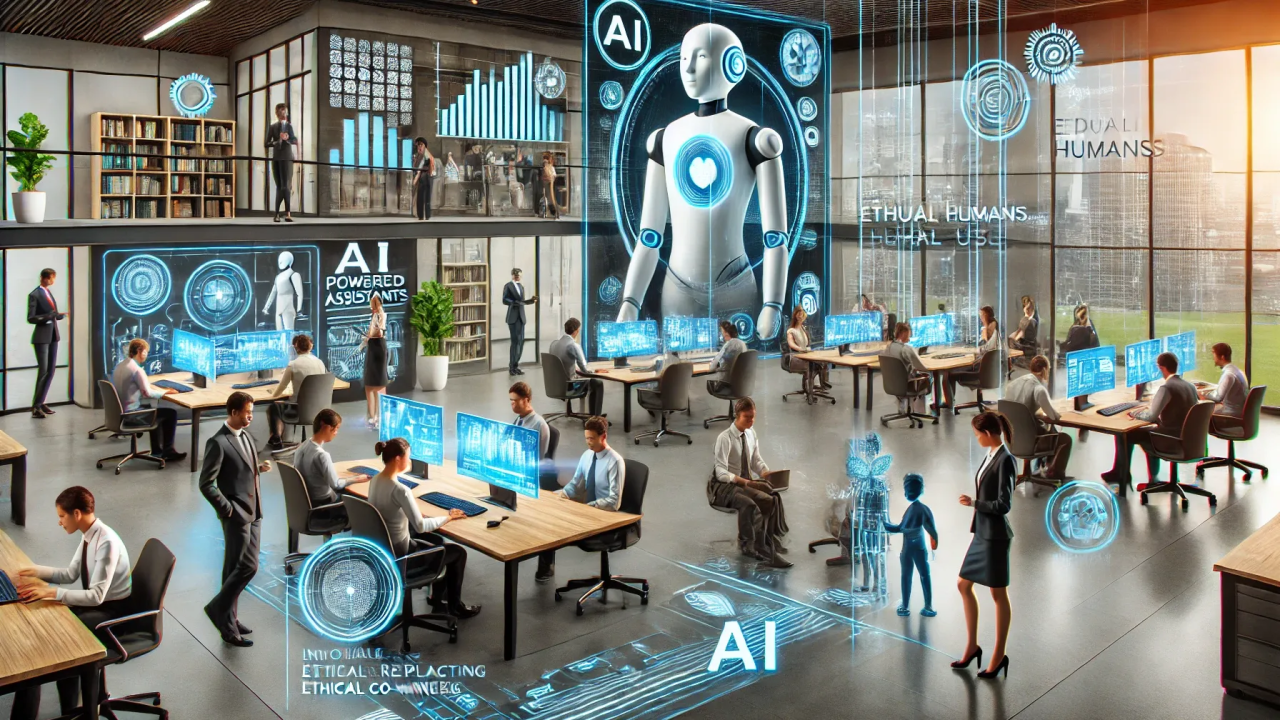AI in Business – Beyond the Hype, Toward Human Centric Transformation

Introduction
The relentless march of artificial intelligence has left businesses scrambling to separate substance from spectacle. Every department, from operations to HR, grapples with the same existential question: Will AI solve our problems or bury us in new layers of complexity? The hype cycle insists we adopt now, but meaningful integration requires more than blind faith in technology – it demands a radical rethinking of how we align tools with human potential.
A Mirror Held by Machines
Last month, I tested an AI tool that analyzed my 2024 LinkedIn posts to generate a psychological profile. To my surprise, its assessment mirrored results from formal frameworks like Myers-Briggs, DISC, and CliftonStrengths – tools businesses use to map employees to roles. Myers-Briggs categorizes personality types; DISC evaluates communication styles; CliftonStrengths identifies innate talents. These frameworks, while imperfect, help individuals recognize their strengths. For years, my profiles clarified why I thrived in creative problem-solving but clashed with rigid corporate hierarchies. Yet the larger issue remained: Organizations rarely ask whether their own structures align with the people they profile.
This disconnect reveals a deeper truth: Organizations, like people, have “personalities.” The way a company operates – its workflows, hierarchies, even its software – creates an invisible ecosystem that employees must navigate. A startup’s agile “personality” might encourage experimentation, while a legacy corporation’s risk-averse “DNA” stifles it. Too often, we focus on profiling individuals while ignoring the systemic quirks that stifle their potential.
The Copy-Paste Conundrum
Modern workplaces are labyrinths of fragmented technology. Employees spend hours copy-pasting data between siloed systems, drowning in redundant tasks while genuine creativity gathers dust. A marketing team might toggle between a CRM that can’t sync with web analytics tools, forcing manual data entry that eats 30% of their week. The result? Burnout, errors, and talent attrition.
Consider HR: After recruitment, most departments lose visibility into how employees actually work. They track hiring, payrol, vacation days and conduct annual surveys but miss the daily friction points – the clunky software, the misaligned incentives, the 17th Excel spreadsheet that exists solely because “the system can’t talk to itself.” A 2023 Gallup study found that only 23% of employees feel their organization listens to feedback about workplace tools.
This isn’t just inefficiency – it’s a failure to see employees as more than cogs. Imagine a retail chain where yogurt ends up next to gardening tools because an algorithm prioritized “visibility” over logic. Store managers know it’s absurd, but the system rewards shelf turnover metrics, not customer experience. Absurd? Yet this is how many companies treat their people. Workers are plugged into roles optimized for outdated metrics, their talents reduced to transactional inputs. We wouldn’t tolerate such disarray in supply chains – why accept it in human capital?
HR’s Missed Revolution
Here’s the irony: The tools to fix this already exist. Process-mining software, AI, Machine Learning can map human-organisation workflows in real time, showing how tasks flow (or stall) between teams. Machine learning can analyze these patterns to identify bottlenecks (“Why does every change initiative delay start with endless uproductive meetings?”), skill gaps (“Revenue specialists spend 40% of their time troubleshooting tech – should we upskill them or fix the tools?”), and even predict burnout. When layered with psychometric insights, this technology could let HR pivot from administrator to architect – designing roles that flex to human strengths rather than forcing square pegs into round holes.
But first, HR must transform itself. Traditional employee development – think annual reviews or sporadic manager coaching – is obsolete. If AI reshapes every job, continuous upskilling and mental flexibility become survival skills. HR should democratize coaching (think AI-powered mentorship platforms), offer real-time feedback loops via tools, and act as a bridge between human needs and algorithmic efficiency. This requires HR teams to adopt agile methodologies, partnering with technology and operations to co-design systems that serve people, not just productivity.
The Tectonic Shift Ahead
Success hinges on breaking silos. Deploying AI within single departments (e.g., automating HR onboarding) risks creating more disjointed systems. Instead, organizations need a “central nervous system” that connects operations, strategy, and culture. HR, armed with behavioural data and ethical oversight, is uniquely positioned to lead this integration.
Critically, this isn’t about surveillance. Monitoring keystrokes or screen time misses the point. The goal is to illuminate context: Why does a sales team crumble under CRM updates? What tacit knowledge do veteran call agent possess that AI can’t replicate? How do cross-departmental handoffs breed frustration?
A Call for Courage
The hardest step is the first. HR leaders must advocate for technologies that reveal systemic flaws – even when those flaws implicate leadership. Managers must embrace vulnerability, trading “command and control” for curiosity. And employees deserve transparency: How will AI augment their roles? What support will they get during transitions?
AI’s greatest promise isn’t replacing humans but revealing the invisible – the wasted potential in our processes and the unmet needs in our people. To harness it, we must stop asking, “What can AI do?” and start asking, “Who do we want to become?” The answer will define not just our businesses, but our humanity.

0 Comments